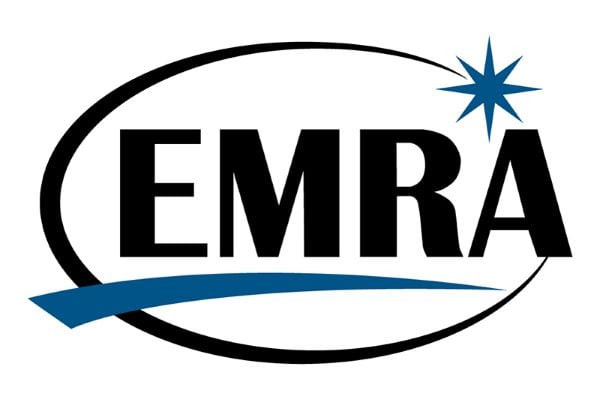Top 10 Landmark EM Articles I Wish I Read Before Rotations
Caroline Bradford, MSIV, Liberty University College of Osteopathic Medicine
EMRA MSC Mid-Atlantic Representative, 2022-23
Jessica Andre, MSIV, Howard University College of Medicine
EMRA MSC Northeast Coordinator, 2022-23
During our first emergency medicine rotations, we often realize just how much still have left to learn. It’s equal parts daunting and thrilling, because our job as fourth years is to soak up as much knowledge as possible before becoming an intern. While there are countless resources available across every medium imaginable (shoutout podcasts for that workday commute), it’s easy to get lost in the peer-reviewed journal sauce. There are decades’ worth of valuable research that shape our daily practices and inform our approach to medicine, but it’s not always easy to know where to begin.
As physicians, we must understand not only where our clinical guidelines are coming from, but the quality and applicability of those sources. It certainly looks good as a student to be able to reference a study by name to our preceptors, but it is more important to cement those studies’ evidence and conclusions into our practices at an early stage. The roster of those landmark studies is long and certainly worth a deeper dive, but this list is a good starting point to familiarize yourself with core emergency medicine studies:
- Goal-directed therapy in the treatment of severe sepsis and septic shock [1]
- Sets the precedent for the Surviving Sepsis Campaign[2], an initiative that sets guidelines for early antibiotic use, fluid resuscitation, and other goal-directed interventions. These interventions have been adapted, but this study normalized aggressive management in patients presenting with systemic inflammatory response, sepsis, and septic shock.
- The Canadian C-spine rule for radiography in alert and stable trauma patients[3]
- Derivation of Canadian C-spine Rule which helps determine need for imaging in stable trauma patients in an era where weighing the cost and risks of radiation against the benefit to the patient. These rules added some standardization to which patients get scanned and which are safe to not scan.
- A comparison of rate control and rhythm control in patients with atrial fibrillation[4]
- This study compared cardioversion and treatment with antiarrhythmic drugs until normal sinus rhythm resumed to the use of rate-controlling drugs while permitting atrial fibrillation to continue. Due to lower adverse side effects and lower hospitalization rates, rate-control methods were deemed preferred in most scenarios.
- Mild therapeutic hypothermia to improve the neurologic outcome after cardiac arrest[5]
- Demonstrates how neurologic impairment following cardiac arrest due to ventricular fibrillation can be mitigated by therapeutic hypothermia (32-34 degrees Celsius). Studies following this one investigate the best temperature for the most ideal timeframe but rely on the demonstrated benefit.
- Tissue plasminogen activator for acute ischemic stroke.[6]
- Determined the benefits of t-PA despite the well-known risk of intracerebral hemorrhage at the time. This study laid the groundwork for future studies to determine the time range from onset of ischemic stroke to treatment with IV t-PA.
- Identification of children at very low risk of clinically-important brain injuries after head trauma: a prospective cohort study[7]
- Creates the Pediatric Emergency Care Applied Research Network (PECARN) pediatric head injury rule to determine risk and need for head CT. Imaging in children has higher risks than adults for lethal malignancy over their life, leading to the need for guidance on when imaging is necessary. It is worth mentioning traumatic brain injuries were found to be rare in this population, further guiding decision-making.
- Ventilation with lower tidal volumes as compared with traditional tidal volumes for acute lung injury and the acute lung injury and the acute respiratory distress syndrome[8]
- Demonstrated the benefits of low tidal volume for those with acute lung injury and acute respiratory distress syndrome. This study led to practices that decreased the rates of stretch-induced lung injury and decreased mortality rates in these vulnerable patients.
- Prospective multicenter evaluation of the pulmonary embolism rule-out criteria[9]
- Created the pulmonary embolism rule-out criteria (PERC) rule to be able to rule out pulmonary embolism in low-risk patients, decreasing instances of over-investigation and workup in the emergency department. This rule is widely used to create a differential.
- Randomized controlled clinical trial of point-of-care, limited ultrasonography for trauma in the emergency department: the first sonography outcomes assessment program trial[10]
- Introduced the use of ultrasound in patients with suspected torso trauma to decrease the time to surgical intervention, normalizing its use in the emergency department. This study focused on point-of-care, limited ultrasonography, leaving room for investigation in future studies as ultrasonography in trauma becomes more widely used.
- Prospective validation of the San Francisco Syncope Rule to predict patients with serious outcomes[11]
- The San Francisco Syncope Rule is being evaluated in this study which demonstrates its high sensitivity and specificity. This study reaffirms the usefulness of this rule to risk stratify patients with syncope who have returned to neurologic baseline, leading to better diagnoses and management.
Hopefully having these studies in your back pocket will help you in the emergency department, providing insight on why we practice the way we do. While these papers had seminal impacts on emergency medicine, it is important to remember that research is continuously looking to adapt, confirm, or contradict these studies, keeping our field on the cutting-edge of evidence and medical knowledge. Happy reading!
[1] Rivers E, Nguyen B, Havstad S, Ressler J, et al; Early Goal-Directed Therapy Collaborative Group. Early goal-directed therapy in the treatment of severe sepsis and septic shock. N Engl J Med. 2001 Nov 8;345(19):1368-77. PMID: 11794169.
[2] Surviving Sepsis Campaign: https://www.sccm.org/SurvivingSepsisCampaign/Home
[3] Stiell IG, Wells GA, Vandemheen KL, Clement CM, et al. The Canadian C-spine rule for radiography in alert and stable trauma patients. JAMA. 2001 Oct 17;286(15):1841-8. PMID: 11597285
[4] Wyse DG, Waldo AL, DiMarco JP, Domanski MJ, et al; Atrial Fibrillation Follow-up Investigation of Rhythm Management (AFFIRM) Investigators. A comparison of rate control and rhythm control in patients with atrial fibrillation. N Engl J Med. 2002 Dec 5;347(23):1825-33. PMID: 12466506
[5] Hypothermia After Cardiac Arrest Study Group. Mild Therapeutic Hypothermia to Improve the Neurologic Outcome after Cardiac Arrest. N Engl J Med. 2002 Feb 21;346(8):549-56. PMID: 11856793
[6] The National Institute of Neurological Disorders and Stroke rt-PA Stroke Study Group. Tissue plasminogen activator for acute ischemic stroke. N Engl J Med. 1995 Dec 14;333(24):1581-7. PMID: 7477192
[7] Kuppermann N, Holmes JF, Dayan PS, Hoyle JD Jr, et al; Pediatric Emergency Care Applied Research Network (PECARN). Identification of children at very low risk of clinically-important brain injuries after head trauma: a prospective cohort study. Lancet. 2009 Oct 3;374(9696):1160-70. PMID: 19758692
[8] The Acute Respiratory Distress Syndrome Network. Ventilation with lower tidal volumes as compared with traditional tidal volumes for acute lung injury and the acute respiratory distress syndrome. N Engl J Med. 2000 May 4;342(18):1301-8. PMID: 10793162
[9] Kline JA, Courtney DM, Kabrhel C, Moore CL, et al. Prospective multicenter evaluation of the pulmonary embolism rule-out criteria. J Thromb Haemost. 2008 May;6(5):772-80. PMID: 18318689
[10] Melniker LA, Leibner E, McKenney MG, Lopez P, Briggs WM, Mancuso CA. Randomized controlled clinical trial of point-of-care, limited ultrasonography for trauma in the emergency department: the first sonography outcomes assessment program trial. Ann Emerg Med. 2006 Sep;48(3):227-35. PMID: 16934640
[11] Quinn J, McDermott D, Stiell I, Kohn M, Wells G. Prospective validation of the San Francisco Syncope Rule to predict patients with serious outcomes. Ann Emerg Med. 2006;47(5):448-54. PMID: 16631985
Related Content

Aug 25, 2017
Your Home
The Emergency Medicine Residents' Association EMRA is the voice of emergency medicine physicians-in-training and the future of our specialty and the largest and oldest independent resident organization in the world. EMRA was founded in 1974 and today has a membership over 18,000 residents, medical students, and alumni.






